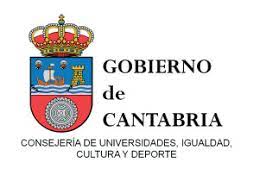Emilia Pardo Bazán (1851-1921) and Victorian criticism: a comparison with the critical work of Matthew Arnold (1822-1888) and George Eliot (1819-1880) written during the decades of 1850-1860
DOI:
https://doi.org/10.55422/bbmp.547Keywords:
Emilia Pardo Bazán, George Eliot, Matthew Arnold, Aesthetics, ModernityAbstract
Pardo Bazán’s critical works written during the Restoration (1874-1931) share similar affinities with the socio-aesthetic purposes promoted in the 1850s and 1860s by Victorian critics Matthew Arnold and George Eliot. Nineteenth-century criticism faces a complex dilemma: to restore in modern times the spread of knowledge embraced by eighteenth-century periodicals or to practice a more specialized criticism with a lesser degree of impact among the reading public. Arnold, Eliot and Pardo Bazán published their criticism, respectively, in periodicals such as The Cornhill Magazine (1860-1975), The Westminster Review (1823-1914), Nuevo Teatro Crítico (1891-1893), La Ilustración Artística (1882-1916) or La España Moderna (1889-1914). They embraced an ambitious project, inspired by Renaissance humanism, which confronts the utilitarian materialism of their time, vindicating for literature the pursuit of intellectual excellence. Their criticism—based on cosmopolitan, eclectic, and secular foundations—argues for the spread of humanist culture in a complex historical context which makes difficult the promotion of such ideals among the reading public. Their distinguished intellectual enterprise, in any event, elaborated a worthy interpretation on modern culture produced in the second half of the nineteenth-century.
Downloads
Publication Facts
Reviewer profiles N/A
Author statements
Indexed in
- Academic society
- Sociedad Menéndez Pelayo
- Publisher
- Sociedad Menéndez Pelayo
Global Statistics ℹ️
|
261
Views
|
178
Downloads
|
|
439
Total
|
|
References
ARNOLD, Matthew. (1893). La crítica en la actualidad. Madrid.Agustín Avrial.
--Essays on Criticism. Third Series. (1910). Edición de Edward J. O’Brien. Boston. The Ball Publishing.
--Poetry and Criticism. (1961). Edición, introducción y notas de A. Dwight Culler. Boston. Houghton Mifflin.
--Cultura y anarquía. Ensayo de crítica política y social. (2010) [1869]. Traducción, edición, introducción y notas Javier Alcoriza y Antonio Lastra. Madrid. Cátedra.
ASHTON, Rosemary. (2007). George Eliot. Oxford. Oxford University Press.
BENJAMIN, Walter. (1988). Dirección única. Traducción deJuan J. del Solar y Mercedes Allendesalazar. Madrid. Alfaguara.
BIEDER, Maryellen. (1992). «Emilia Pardo Bazán y las literatas: las escritoras españolas del XIX y su literatura». Actas del X Congreso de la Asociación Internacional de Hispanistas. Antonio Vilanova, Josep María Bricall y Elías L. Rivers (coord.). Vol. 2. Barcelona.PPU. 1203-1212.
--(1993). «Emilia Pardo Bazán and Literary Women: Women Reading Women’s Writing». Revista Hispánica Moderna. 46.19-35.
BLOOM, Harold. (1997). The Anxiety of Influence. A Theory on Poetry. Oxford. Oxford University Press.
BRETZ, Mary Lee. (1988). »Emilia Pardo Bazán on John Stuart Mill: Towards a Redefinition of the Essay». Hispanic Journal.9.2. 81-88.
BURCKHARDT, Jacob (1940). Die Kultur der Renaissance in Italien. Stuttgart. Alfred Kröner Verlag.
BURDIEL, Isabel. (2019). Emilia Pardo Bazán. Barcelona.Taurus.
COLERIDGE, Samuel Taylor (1847) [1817]. BiographiaLiteraria or Biographical Sketches of my Literary Life and Opinions. Edición de Henry Nelson Coleridge. Vol. 2 Londres. William Pickering. DOI: https://doi.org/10.1037/11970-000
COLLINI, Stefan. (1993). «Matthew Arnold». Victorian Thinkers. Keith Thomas (coord.). Oxford. Oxford University Press. 193-32.
CORDE = Real Academia Española: Banco de datos (CORDE) [en línea]. Corpus diacrónico del español, http://www.rae.es
[consultado en noviembre de 2021].
COVARRUBIAS HOROZCO, Sebastián de. (2006) [1611].Tesoro de la lengua castellana o española. Edición de Ignacio Arellano y Rafael Zabra. Madrid. Iberoamericana.
EAGLETON, Terry. (1998). Walter Benjamin o hacia una crítica revolucionaria. Traducción de Julia García Lenberg. Madrid. Cátedra.
--(1999). La función de la crítica. Traducción de Fernando Inglés Bonilla. Barcelona. Paidós.
--(2001) La idea de la cultura. Una mirada política sobre los conflictos culturales. Traducción de Ramón José del Castillo. Barcelona. Paidós.
EAGLETON, Terry y Matthew Beaumont. (2009). The Task of the Critic. Terry Eagleton in Dialogue. Londres. Verso.
ELIOT, George. (1885). Essays and Leaves from a Note-Book. Londres. William Blackwood.
--(1992). Selected Critical Writings. Edición de Rosemary Ashton. Oxford. Oxford University Press.
--(2012). Las novelas tontas de ciertas damas novelistas. Traducción de Gabriela Bustelo. Salamanca. Impedimenta.
ELIOT, T.S. (1932). Selected Essays, 1917-1932. Nueva York.Harcourt.
EZAMA GIL, Ángeles. (2018). Las musas suben a la tribuna. Visibilidad y autoridad de las mujeres en el Ateneo de Madrid (1882-1939). Logroño. Genueve Ediciones. DOI: https://doi.org/10.22429/Euc2019.008
FAUS, Pilar. (2003). Emilia Pardo Bazán. Su época, su vida, su obra. 2 vols. A Coruña. Fundación Pedro Barrié de la Maza.
FITZMAURICE-KELLY, James. (1898). A History of Spanish Literature. Nueva York. Appleton.
--(1926). Historia de la literatura española. 6ª ed. Traducción de Adolfo Bonilla. Madrid. Ruiz Hermanos.
FLINT, Kate. (2001). «George Eliot and Gender». The Cambridge Companion to George Eliot. George Levine (coord.). Cambridge. Cambridge University Press. 159-180. DOI: https://doi.org/10.1017/CCOL0521662672.009
FORD, J.D.M. (1919). Main Currents of Spanish Literature. Nueva York. Henry Holt.
GARRIGA, Cecilio y Francesc Rodríguez. (2008). «Notas al Diccionario manual e ilustrado de la lengua española (RAE. 1927)». El diccionario como puente entre las lenguas y las culturas del mundo: Actas del II Congreso Internacional de Lexicografía Hispánica. Dolores Azorín
Fernández et al. (coord..). Alicante. Biblioteca Virtual Miguel de Cervantes. 96-105.
GILBERT, Sandra M. y Susan Gubar. (1997). La loca del desván. La escritora y la imaginación literaria del siglo XIX. Traducción de Carmen Martínez Gimeno. Madrid. Cátedra.
GÓMEZ DE BAQUERO, Eduardo [Andrenio] (1924). El renacimiento de la novela española en el siglo XIX. Madrid. Mundo Latino.
GONZÁLEZ HERRÁN, José Manuel. (1989). «Emilia Pardo Bazán y Émile Zola. De Les Romanciers naturalistes a La cuestión palpitante». Letras Peninsulares. 2.1. 31-43.
HARDY, Barbara. (2006). George Eliot. Londres. Continuum.
HEMINGWAY, Maurice. (1983). Emilia Pardo Bazán. The Making of a Novelist. Cambridge. Cambridge University Press.
HENRY, Nancy. (2008). The Cambridge Introduction to George Eliot. Cambridge. Cambridge University Press. DOI: https://doi.org/10.1017/CBO9780511793233
HOBSBAWM, Eric J. (1995). The Age of Capital, 1848-1875.Londres. Abacus.
HOLDERNESS, Graham. (1993). «Matthew Arnold: The Discourse of Criticism». The British Critical Tradition. A Re-Evaluation. Gary Day (coord.). Nueva York. St. Martin’s Press, 1993. 29-37. DOI: https://doi.org/10.1007/978-1-349-22424-1_3
HOLLOWAY, John. (1953). The Victorian Sage. Studies in Argument. Londres. McMillan.
HORNBY, A.S., A.P. Cowie y A.C. Grimson. (1981). Oxford Advanced Learner’s Dictionary of Current English. Londres. Oxford University Press.
HOUGHTON, Walter E. (1957). The Victorian Frame of Mind. New Haven. Yale University Press.
JAMES, D.G. (1961). Matthew Arnold and the Decline of English Romanticism. Oxford. Clarendon Press.
JOHNSON, Lionel. (1911). Post-Limium: Essays and Critical Papers. Edición de Thomas Whittemore. Londres. Elkin Mathews.
KARL, Frederick. (1995). George Eliot. Voice of a Century. Nueva York. Norton.
KNOEPFLMACHER, U.C. (1963). «The Wordsworthian Matrix in the Poetry of Matthew Arnold». Victorian Poetry. 1.1. 17-26.
KORSMEYER, Carolyn. (2004). Gender and Aesthetics. An Introduction. Nueva York. Routledge. DOI: https://doi.org/10.4324/9780203646632
LEAVIS, F.R. (1968). A Selection from «Scrutiny». Vol. 1. Cambridge: Cambridge University Press. DOI: https://doi.org/10.1017/CBO9780511552793.002
MACHANN, Clinton. (2013). «Matthew Arnold (1822-1888)». The Cambridge History of Literary Criticism. M.A.R. Habib(coord..). Vol. 6. Cambridge: Cambridge University Press. 419-439. DOI: https://doi.org/10.1017/CHO9781139018456.029
MARTÍ MONTERDE, Antoni. (2015). «La Literatura Comparada según Sainte-Beuve». Thélème. 1. 93-113. DOI: https://doi.org/10.5209/rev_THEL.2015.v30.n1.44663
MENÉNDEZ PELAYO, Marcelino. (1994) [1883-1891]. Historia de las ideas estéticas en España. Vol. 2. Madrid: CSIC.
MIYOSHI, Masao. (1969). The Divided Self: A Perspective on the Literature of the Victorians. Nueva York. New York University Press.
MONTOYA, José. (2001). «La renovación del utilitarismo y la idea de la libertad en John Stuart Mill». La filosofía del siglo XIX. José Luis Villacañas (coord.). Madrid. Trotta. 237-259.
ORDÓÑEZ, Elizabeth. (1990). «Revising Realism. Pardo Bazán’s Memorias de un solterón in Light of Galdós’s Tristana and John Stuart Mill». In the Feminine Mode. Essays on Hispanic Women Writers.Noël Valis y Carol Maier (coord.). Lewisburg. Bucknell University Press. 146-163.
ORTEGA Y GASSET, José. (2009) [19-VII-1908]. «Meier Graefe». La deshumanización del arte y otros ensayos de estética. Edición de Paulino Garagorri. Madrid. Alianza. 57-60.
OSBORNE, Robert E. (1964). Emilia Pardo Bazán. Su vida y sus obras. México D.F. Ediciones De Andrea.
PARDO BAZÁN, Emilia (1892). Los franciscanos y Colón. Madrid: Establecimiento Tipográfico «Sucesores de Rivadeneyra», 1892. --(1893). »Advertencia preliminar». La mujer ante el socialismo. Augusto Bebel. Madrid. Biblioteca de la Mujer. 5-7.
--(1902). De siglo a siglo (1896-1901). Madrid. Establecimiento Tipográfico de Idamor Moreno.
--(1904) [1882]. San Francisco de Asís (siglo XIII). París, Garnier.
--(1908). Retratos y apuntes literarios. Madrid. Velasco.
--(1926). El lirismo en la poesía francesa. Introducción de Luis Araujo-Costa. Madrid. Pueyo.
--(1961) [1887]. La Revolución y la novela en Rusia. Introducción de Rafael González Sandino. Madrid. Publicaciones Españolas.
--(1972). La vida contemporánea (1896-1915). Edición de Carmen Bravo-Villasante. Madrid. Emesa.
--(1973). Obras completas. Edición de Harry L. Kirby, Jr. Vol. 3. Madrid. Aguilar.
--(1989) [1882-1883]. La cuestión palpitante. Edición, introducción y notas de José Manuel González Herrán. Barcelona. Anthropos.
--(2018). La mujer española y otros escritos. Edición de Guadalupe Gómez Ferrer. Madrid. Cátedra.
PARRINDER, Patrick. (1991). Authors and Authority. English and American Criticism, 1750-1990. Nueva York. Columbia University Press. DOI: https://doi.org/10.1007/978-1-349-21479-2
PAUL, Herbert W. (1920). Matthew Arnold. Londres.McMillan.
PRICKETT, Stephen. (2009). Modernity and the Reinvention of Tradition. Backing into the Future. Cambridge. Cambridge University Press.
REAL ACADEMIA ESPAÑOLA. (1780). Diccionario de la lengua castellana. Madrid. Joaquín Ibarra.
-- (1869). Diccionario de la lengua castellana. 11ª ed. Madrid. Real Academia Española.
--(1884). Diccionario de la lengua castellana. 12ª ed. Madrid. Real Academia Española.
--(1899). Diccionario de la lengua castellana. 13º ed. Madrid.Imprenta de Hernando.
--(1970). Diccionario de la lengua castellana. 19ª ed. Madrid.Espasa-Calpe.
--(1927). Diccionario manual e ilustrado de la lengua española. Madrid. Espasa-Calpe.
SAINTE-BEUVE, Charles-Augustine. (1889). Portraits contemporains. París. Calman Lèvy.
SALINAS, Pedro. (1925). «Introducción.» Poesías. Juan Meléndez Valdés. Edición, introducción y notas de Pedro Salinas. Madrid. Ediciones de La Lectura. 7-68.
SALVÁ, Vicente (1847). Nuevo diccionario de la lengua castellana. París. Librería de Vicente Salvá.
SCHLEGEL, Frederick. (1889) [1815]. Lectures on the History of Literature, Ancient and Modern. Trad. Henry G. Bohn. Londres. William Clowes.
SHOWALTER, Elaine (1977). A Literature of Their Own. British Novelists from Brönte to Lessing. Princeton. Princeton University Press. DOI: https://doi.org/10.1515/9780691221960
SRIVASTAVA, K.G. (1975). «How does Tragedy achieve Katharsis according to Aristotle?». The British Journal of Aesthetics.15.2. 132-143. DOI: https://doi.org/10.1093/bjaesthetics/15.2.132
SOTELO VÁZQUEZ, Marisa. (2002). «Fundamentos estéticos de la crítica literaria de Pardo Bazán». La elaboración del canon en la literatura española del siglo XIX. Luis F. Díaz Larios et al. (coord..). Barcelona. PPU. 414-426.
TAINE, Hyppolite. (1965) [1863-1869]. History of the French Literature. Traducción de H. Van Laun. Vol. 4. Nueva York.Frederick Ungar.
TERREROS Y PANDO, Esteban de. (1786-1793). Diccionario castellano con las voces de ciencias y artes y sus correspondientes en las tres
lenguas, francesa, latina e italiana. 4 vols. Madrid. Imprenta de la Viuda de Ibarra.
THION SORIANO-MOLLÁ, Dolores. (2005). «Emilia Pardo Bazán en los negocios culturales de José Lázaro Galdiano: el curioso caso de María Bashkirtseff». III Coloquio. Sociedad de Literatura Española del siglo XIX (coord.). Barcelona. Universidad. 369-382.
TIEGHEM, Paul van. (1948). L’ère romantique. Le romantisme dans la littérature européenne. París. Editions Albin Michel.
TRILLING, Lionel. (1949). Matthew Arnold. Nueva York Columbia University Press. DOI: https://doi.org/10.7312/tril91948
VERSTEEG, Margot. (2019). Propuestas para (re)construir una nación. El teatro de Emilia Pardo Bazán. West Lafayette. Purdue University Press. DOI: https://doi.org/10.2307/j.ctvhhhd8j
VILLANUEVA, Darío. (2003). «El cosmopolitismo literario de Emilia Pardo Bazán». Actas de las Jornadas Conmemorativas de los 150 años de su nacimiento. Ana María Freire López (coord.). A Coruña. Fundación Pedro Barrié de la Maza. 64-80.
WELLEK, René. (1965). A History of Modern Criticism. Vol. 4. New Haven. Yale University Press.
WILLIAMS, Henry Smith. (Ed.). (1926). The Historians’ History of the World. Scotland and Ireland; England since 1792. Vol. 21. Londres. The Encyclopedia Britannica.
WOOD, Gareth. (2108). «Sugaring the Pill: Emilia PardoBazán, John Stuart Mill, and the Biblioteca de la Mujer». Bulletin of Spanish Studies. 95.6. 605-631. DOI: https://doi.org/10.1080/14753820.2018.1498232
ZULETA, Emilia de. (1974). Historia de la crítica española contemporánea. Madrid. Gredos.
Downloads
Published
How to Cite
Issue
Section
License
Copyright (c) 2022 Íñigo Sánchez-Llama

This work is licensed under a Creative Commons Attribution-NonCommercial 4.0 International License.







